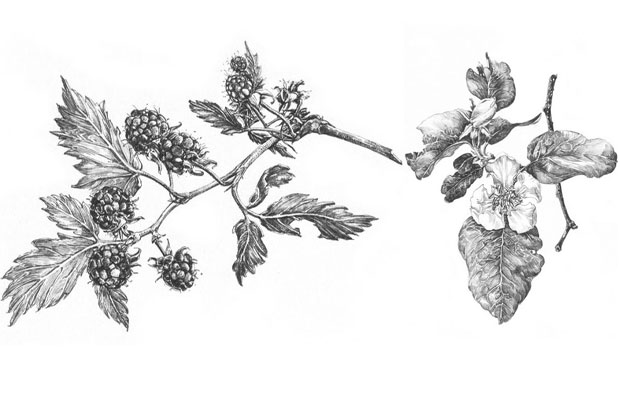John Evelyn (1620–1706) was not only a diarist. He was one of the most learned men of his time: traveller, politician, town-planner, artist, numismatist, gardener and opponent of air pollution. He was a founder of the Royal Society and gave one of its first presentations, which was expanded into Sylva, or a Discourse of Forest-Trees and the Propagation of Timber. The 350th anniversary of this famous book is commemorated by the present large and grand volume.
Sylva was not only about forest trees and timber trees: it included other trees like the then new horsechestnut, it pointed out remarkable individual trees, and had an appendix, Pomona . . . concerning fruit-trees in relation to cider. Evelyn is often thought of as one of the fathers of modern forestry: for example he proposed digging up ancient woods and replacing them with plantations. But he had more interest in landscape design, which was to become an English art form, much more famous than English forestry. How much influence he had in his time has not been properly investigated by studying places where he worked and identifying evidence of his achievements: 17th-century landscape design is a neglected subject. His book ran to 12 editions and revisions up to 1825, and may have had its greatest influence in the 19th century.
Gabriel Hemery, author of the text of this book, is a ‘silvologist’ (blame Evelyn for this ugly term), co-founder of the Sylva Foundation. He writes, like Evelyn, about trees in general with a bias towards growing timber. His book is based on Sylva, which he quotes extensively and expands to incorporate subsequent changes and discoveries. He adds chapters on timber trees like sitka spruce that were unknown in Evelyn’s time. He includes non-forest and orchard trees and trees down to the stature of spindle-tree, but there is no appendix on cider. The book ends with sections on silviculture and forest produce and future forests, which are broadly an account of how modern forestry in its German tradition works, or used to work.
This book is an excellent successor to Sylva, well written and full of interesting information about trees and their propagation and the properties and processing of different timbers. However, I could wish the author had explained how much comes from his own observation, how much from others’ observations, and how much has been copied from author to author since Evelyn’s time or before. In a field full of fables and factoids, the reader needs sources to know how much to believe.
The illustrations are magnificent, pen drawings by the great tree artist Sarah Simblet. She has the rare gift of depicting a recognisable leafless tree, a gift that was denied to artists like Poussin and Gainsborough. Very wisely, she seldom attempts the yet more difficult task of depicting a recognisable leafy tree.
Despite its subtitle, this reads like a 20th-century book. It harks back to when forestry writers were obsessed with fast growth, yield tables and genetic improvement; trees were in effect an artefact, a crop planted for well-defined purposes that often disappeared before the trees had grown; growing trees was more important than selling them; planted trees and forests were equivalent to wild trees, if not better; and the future held no problem worse than climate change.
Foresters then tried to ‘ensure’ that forests were ‘relevant to the current demands of society’ — just what foresters can never do! The author has the forester’s habit of confusing woods with plantations. Hemery presents the future as continuing the pattern of human activity, already begun in Evelyn’s time, of mixing up all the world’s trees — thus losing any remaining distinctiveness about England or Scotland.
The reader will not find much about old trees and wildlife on them, trees as being wildlife themselves, champion and ancient trees, or what happens when plantations fall into neglect, as they often do. The all-important population explosion of deer gets only minor treatment. Nor is the new number one threat, the action of humanity in mixing up all the world’s tree diseases, recognised for what it is. The author mentions many diseases, but treats each one as an isolated misfortune, not as part of a pattern of human activity which is removing tree species after species at random from the world’s plantations and ecosystems.
At the present rate of globalisation, after oak mildew, elm disease, alder disease, ash disease, sudden oak death (which kills larch, not oak), plane disease — and their successors in decades to come— have run their course, how much scope will be left for forestry or silvology by the year 2100?





Comments